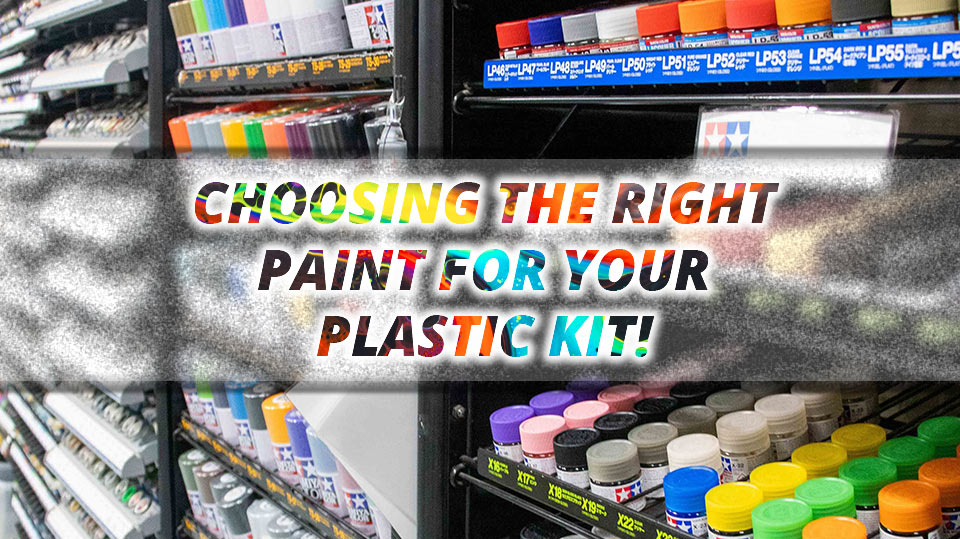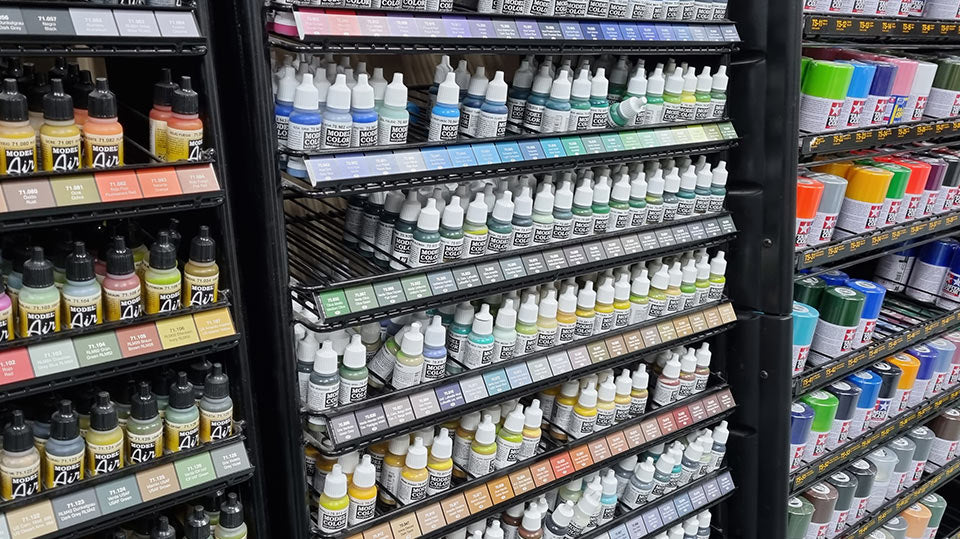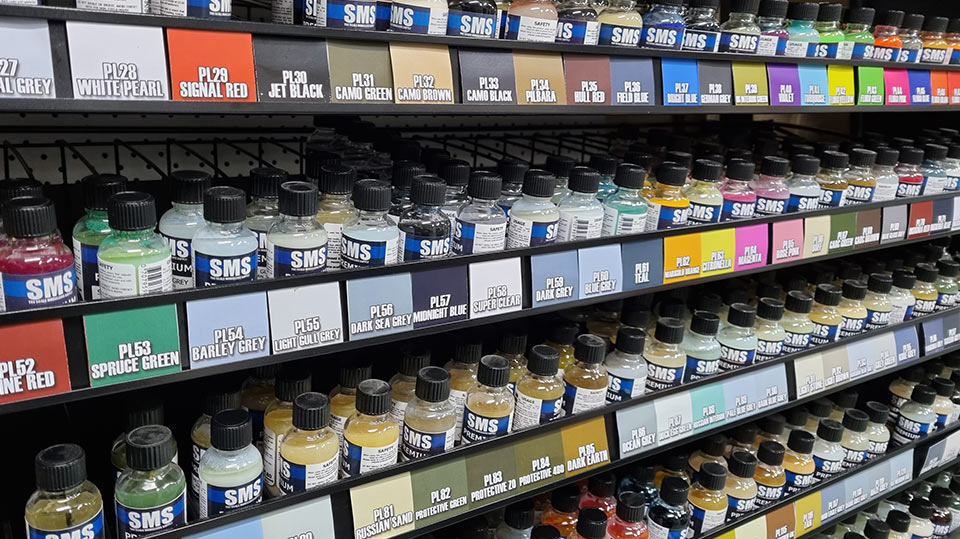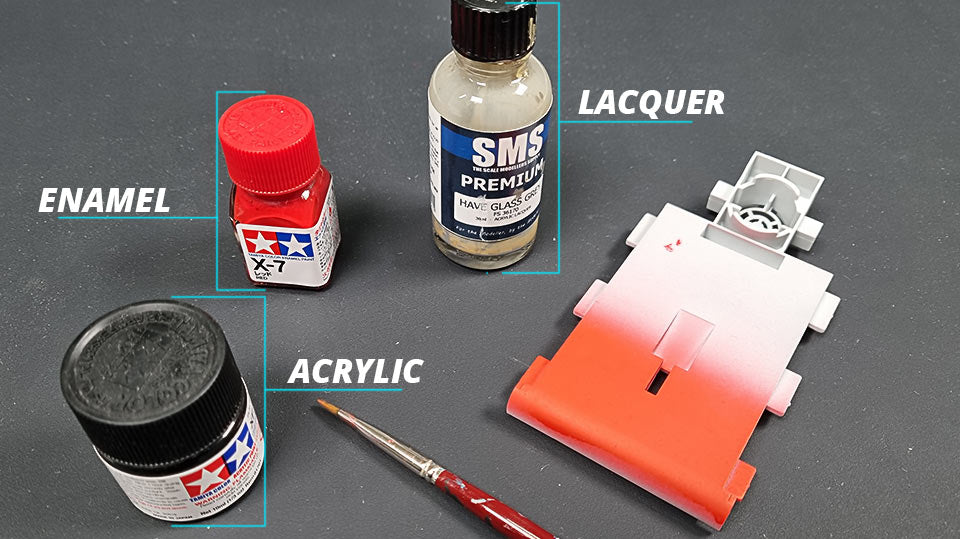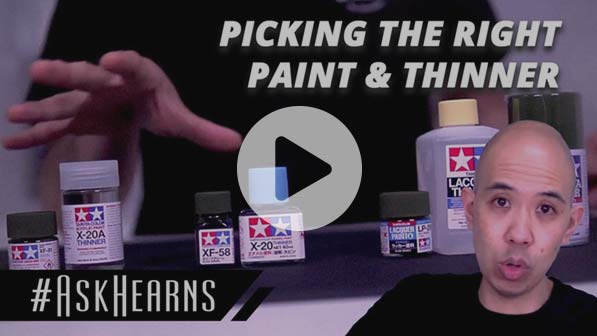What paint should I be using on my plastic models?
BJ gives us a look into the best recommended paints for each of their own specific applications.
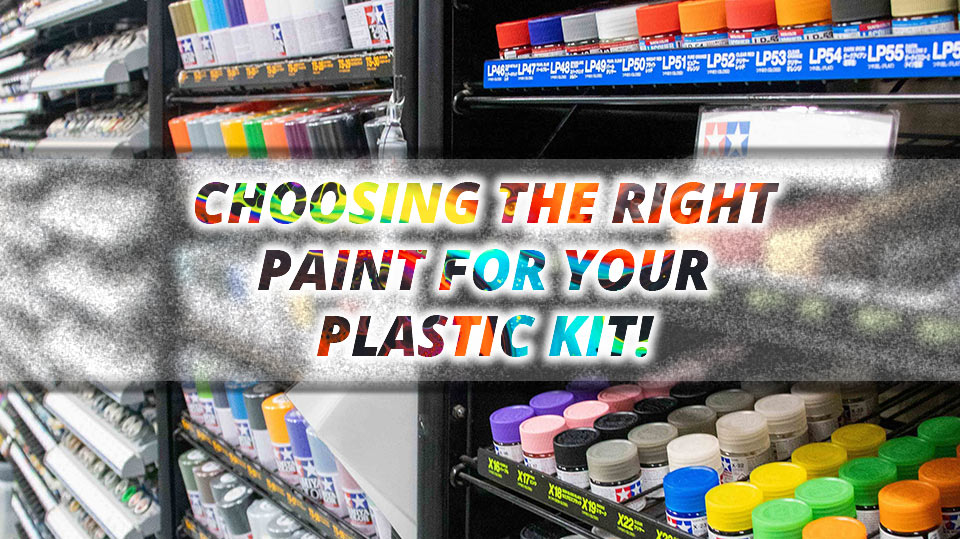
At one point or another in your hobbying life, you might ask yourself "What kind of paints can I use on this plastic model?", "Can I use acrylic paints on
plastic models?", "How are these paints different from each other?". Well BJ is here to help answer these questions for you!
Now if we look at the types of paints that are most commonly used, we see there are 3 kinds:
ACRYLIC PAINTS
ENAMEL PAINTS
Enamels are oil-based paints and are a more traditional variant as they have been around for a very long time. Enamels provide better colour coverage along with a smoother finish, as compared to acrylics. These paints can largely be manipulated even after they’ve dried, making these paints quite unique themselves. As a drawback, due to this level of pliability they tend to not dry as quickly as acrylics would and also have a slightly strong odour about them. The odour/smell is because of its turpentine base, but despite that, it still is a very popular option.
One thing to remember while using enamels – these paints cannot be mixed with water, as their oil base will react and cause a mess. Instead, special enamel thinners are available, and can be used to mix the enamel paint and can also be used to clean brushes.
LACQUER PAINTS
Lacquer paints are solvent-based paints that are mostly found in spray can forms. Bottle type are available as well and are highly in demand especially for the sake of airbrushing. Lacquer are also called ‘acrylic lacquers’ and should not to be confused with acrylic water-based paints (the acrylic paints mentioned at the start of this blog). The term ‘acrylic’ has more to do with the colour pigmentation and not so much with the properties of the paint.
The benefit of lacquers are, is that they dry much harder than the acrylics and the enamels, they have more colour variations and options for high gloss finishes especially for cars and such. Because they dry so hard, they are also easy to polish into a mirror-like finish on model cars. Perhaps the only drawback is its extremely strong odour which is quite overpowering. Therefore, this product is recommended for use only in the outdoors or in well ventilated areas. It is also advised to wear a mask when working with lacquer.
MIXING PAINTS
While painting on plastic models if you’re wondering whether or not you can mix them, or use them on top of each other, then the answer is YES you can! While you can use the 3 types of paints together on one model, you must do so with extreme care and ensure that each layer of paint has first dried fully before you attempt to coat it with another.
Another thing to keep in mind while mixing is that the solvent base in lacquers might reactivate the layers of acrylic and enamel paints, causing an untidy mess as the layers may merge or seep into one another as they overlay. It is therefore advised to first test the new layer on a small portion before fully applying new paint, to avoid any adverse reaction.
THINNERS
Finally, it is also important to use the correct thinners for each type of paint. For this example, the Tamiya brand offers a variety of thinners that suit every paint type.
Each modelling paint variant has a thinner of its own and must be used with that itself in order to get the best results. But what’s interesting is that lacquer thinners can be used interchangeably for all three types of paint (as BJ shows in the below video). So, if you’re okay with dealing with its strong odour, you can possibly forego purchasing every corresponding thinner for each type of paint and use the lacquer thinners instead.
Now that you have a better understanding of the basics of the types modelling paints, all that’s left to do is to pick out your favourite plastic model and paint and modify it to look exactly like you want it to!
 is here! Shop now, pay later in 4 easy installments
is here! Shop now, pay later in 4 easy installments

